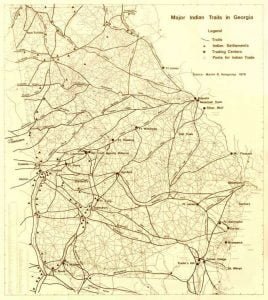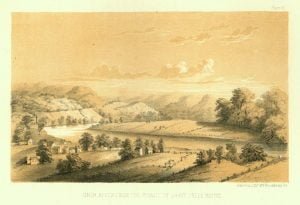The Creek Settlements
The towns and villages of the Creeks were in the eighteenth century built along the banks of rivers and their smaller tributaries, often in places subject to inundation during large freshets, which occurred once in about fifteen years. The smallest of them contained from twenty to thirty cabins, some of the larger ones up to two hundred, and in 1832 Tukabatchi, then the largest of all the Creek settlements, harbored 386 families. Many towns appeared rather compactly built, although they were composed of irregular clusters of four to eight houses standing together; each of these clusters contained a gens (“clan … Read more



